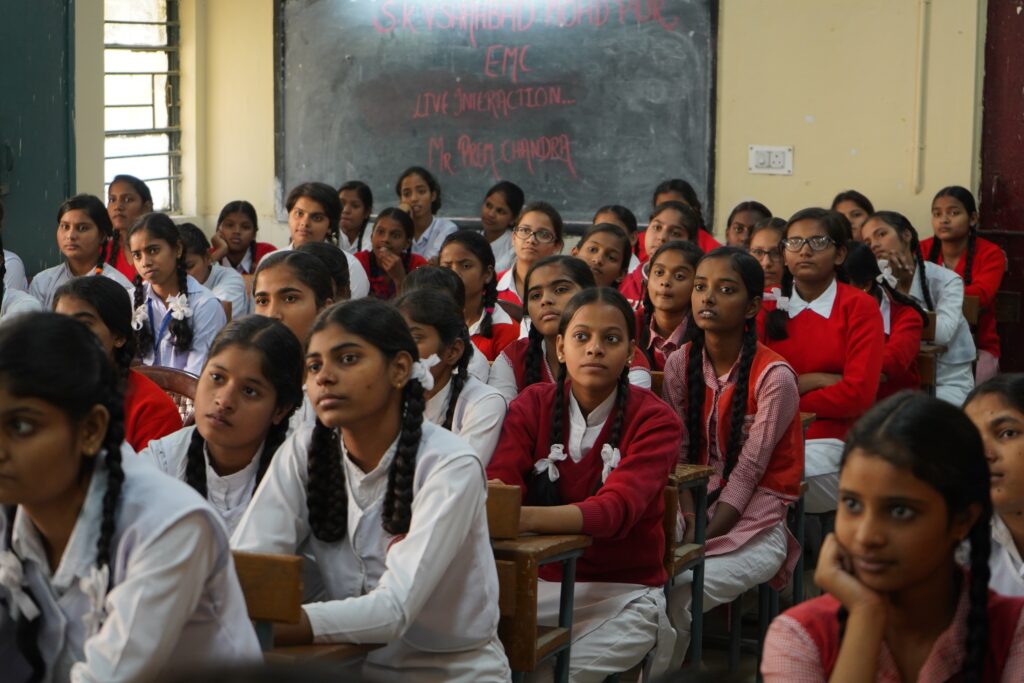School provides us with the basic foundation of knowledge and from where we learn how to socialise with the people around us. It gives a chance to procure knowledge in various fields of education. It is essential to work in that institution by upholding the principles of justice and gender equality. Right now, we are pretending that gender does not matter in the school education system. Thus, it is essential to advocate co-education in the 21st century; otherwise, it can lead to greater gender discrimination and make it harder for students to accommodate the other sex later in life.
“Segregating students based on sex will increase gender stereotyping and crime against women.”
Recently in Kerala, a plea filed by one Dr. Isaac Paul, argued that segregation at schools denies gender justice. Regarding this, the Kerala State Commission for Protection of Child Rights has recommended converting single-sex schools in the state into co-education from the 2023-24 academic year. This is a historic move by the commission to ensure gender equality. Its implementation will bring a paradigm shift in building a gender-neutral society.
What is Co-education?
Co-education is a system of education in which both the male and female participate in learning from the same educational institution without any form of discrimination. It would benefit both genders equally in acquiring knowledge. It is essential for understanding social intelligence.

Image courtesy-Hindustan Times
History of the Co-education System
Plato, the Greek philosopher, firstly proliferated the co-education system in ancient Greece. He believed co-education is the best way to create a feeling of companionship between boys and girls. The history of co-education has existed in China since the 1949 revolution to provide equal educational opportunities without gender discrimination. This system of education emerged in most European countries after World War II. It has introduced after 1970 in many other non-western countries too.
Like in any other non-western country, the co-education system was not in existence in ancient India. Boys went too far off places and joined Gurukuls to study. Girls were not sent to far-off places and thus deprived of education benefits.

In the medieval period, India saw several invasions, and students belonging to women and lower caste were denied education; if allowed, they received education only up to a certain age. Later, social reformers like Raja Ram Mohan Roy fought against this practice of a discriminative form of education for women and men. Later Smt. Hans Mehta Committee on co-education recommended adopting a co-education system in elementary schools.
Today, co-education has entered a different era of growth but simultaneously, single-sex educational institutions also gained significant momentum. To survive, men and women have to cooperate; thus, blending them is essential. Co-ed schools, colleges, and universities are now widely prevalent in India.
Advantages of Co-education System
Let us now consider the advantages and benefits of a co-ed system over same-gender educational institutions.
- The main advantage of the co-educational system is that if boys and girls are taught under the same roof, there is no need for separate schools based on gender. Co-education is thus economical.
- It will help to understand the concept of equality. When the boys and girls study in a co-ed situation, a feeling of equality will gradually inculcate into their minds.

- Co-ed system offers diversity during their early life. It enables them to adapt quickly to any environment. Thus, it becomes easy to understand the diversity of social and cultural society around the society.
- Co-education institution moulds the students to face a community where both men and women live together. In this way, there generates healthy competition. Both boys and girls work hard to remain ahead of each other in studies and sports.
- Furthermore, the system develops mutual respect and self-esteem among the genders and broadens students’ outlook and personalities.
- Co-education creates a feeling of comradeship between boys and girls. As a result, they do not indulge in eve-teasing. Thus, the co-education system is conducive to the balanced development of the personality of boys and girls.
- Co-education system has psychological benefits too. It helps the girl students to help with their psychological issues like self-defeatism and self-created pessimism.

Society’s Attitude Towards the Co-education System
Conservative people condemn the co-education system of education. Many communities are against it due to their inherent religious doctrine. They believe this system is against society’s traditions and moral values and argues that it will degrade Indian culture. Moreover, they fear this education system will help nurture immoral relationships between boys and girls. Also, according to the conservative mindset studying in co-educational institutions, girls may become immodest and graceless, thus spoiling their moral character. They also claim that girls will get more opportunities if they study in single-sex schools and feel free when studying in an institution only for them.

However, a significant proportion believes the other way. For them, co-education is the best way to boost their children’s confidence and shatter their inhibitions. This will also help reduce the gender gap and help understand and respect the opposite gender. Thus, it plays a vital role in the overall improvement of society.
Contemporary Developments in Indian Society
Co-educational institutions are widely prevalent in all parts of India at various levels like schools, colleges, and universities. Recently, the Kerala State Commission for Protection of Child Rights ordered that all the single-sex educational institutions in the state should change into mixed or co-education schools. Besides implementing this education system, the authorities should improve physical circumstances and basic amenities like toilets in schools and should also provide awareness to parents on the need for co-education.
After Kerala, the Assam government also decided to transform gender-specific schools into co-educational institutes. They primarily aim to convert the girls-only schools into co-educational institutes. Earlier, girls-only schools were built to ensure females had a right to education in a safe and secure environment when education was a luxury for women.

Nevertheless, the time has changed, and now it is essential to have gender-neutral norms in society. Assam Chief Minister Dr Himanta Biswa Sarma shared the image of significant cabinet decisions on Twitter; he said, “To ensure gender equality, all schools under state government to have co-educational facility except for a few girls’ schools with long history and traditions.” Likewise, it will spread to all states of India to promote a gender-equal society.
Conclusion
Co-educational institutions’ better social and emotional climate appears more robust and consistent than single-sex schools.
“Co-education is the best way to achieve students’ overall development as it removes the fear of interacting with the opposite sex. Thus, it prepares them for a better world where they can effortlessly work in an environment filled with people of all kinds.”
However, co-educational institutions are not an utterly problem-free environment. Issues like gender stereotyping, male domination and lack of basic amenities for both sexes exist. Irrespective of all these factors, we should break the gender barriers by bringing together students right from their schooling period to turn our society more gender neutral and gender equal.
You may also like:
Understanding Sex Work as a “Profession” in the 21st Century
About the Author

Born and raised in a highly conservative family, Rekha always wanted to shatter all chains surrounding her from achieving her dreams. She is pursuing her Masters in International Relations and Politics from Mahatma Gandhi University, Kottayam. Her fundamental research interest is in feminism. She also volunteers for the Sex Education Kerala (SEK) foundation.







[…] Analysing the Significance of the Co-education System in the Present Scenario […]